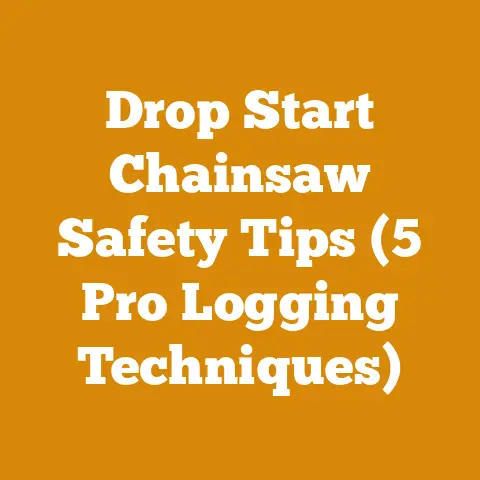Baffle Plate for Wood Heater: Replacement Tips (Expert Stove Fix)
Baffle Plate for Wood Heater: Replacement Tips (Expert Stove Fix)
A baffle plate is a critical component in a wood-burning stove or fireplace insert. Its primary function is to redirect the flow of hot gases, increasing the residence time of these gases in the combustion chamber. This leads to more complete combustion of the wood, resulting in higher efficiency, reduced emissions, and more heat output. When a baffle plate is damaged, the stove’s performance suffers.
Why Replace a Baffle Plate?
Before diving into the costs, let’s quickly cover the reasons why you might need a replacement.
- Cracked or Warped Plate: High temperatures and repeated use can cause the plate to crack or warp, compromising its ability to redirect gases.
- Burnout: Over time, the plate can simply burn out, especially if it’s made of a thinner or lower-quality material.
- Reduced Efficiency: A damaged baffle plate leads to incomplete combustion, meaning you’re burning more wood for less heat.
- Increased Emissions: Incomplete combustion also results in higher levels of smoke and harmful emissions.
- Safety Concerns: In extreme cases, a severely damaged baffle plate can pose a safety hazard.
Understanding Baffle Plate Materials and Their Costs
The type of material a baffle plate is made from significantly impacts its lifespan and, of course, its cost. Here’s a breakdown of common materials:
Steel Baffle Plates
Steel is a common and relatively inexpensive material for baffle plates.
- Cost: Typically the most affordable option, ranging from \$50 to \$150 depending on the size and thickness.
- Lifespan: Can last for several years with proper use, but prone to warping and corrosion over time.
- Pros: Budget-friendly, readily available.
- Cons: Less durable than other options, susceptible to warping.
Cast Iron Baffle Plates
Cast iron offers better heat retention and durability compared to steel.
- Cost: More expensive than steel, ranging from \$100 to \$300.
- Lifespan: Can last for many years, even decades, with proper care.
- Pros: Excellent heat retention, durable.
- Cons: Heavier, more brittle than steel.
Ceramic Fiber Baffle Plates
Ceramic fiber is a lightweight, high-temperature resistant material.
- Cost: Can be comparable to cast iron, ranging from \$100 to \$350.
- Lifespan: Varies depending on the quality of the material and usage, but generally shorter than cast iron.
- Pros: Lightweight, excellent insulation.
- Cons: More fragile than steel or cast iron, prone to damage if mishandled.
Stainless Steel Baffle Plates
Stainless steel offers excellent corrosion resistance and durability.
- Cost: Typically the most expensive option, ranging from \$150 to \$400 or more.
- Lifespan: Can last for many years, even under harsh conditions.
- Pros: Excellent corrosion resistance, durable, long-lasting.
- Cons: Higher initial cost.
Cost Considerations for Materials:
| Material | Average Cost Range | Lifespan Expectancy | Pros | Cons |
|---|---|---|---|---|
| Steel | \$50 – \$150 | 3-5 years | Affordable, readily available | Prone to warping and corrosion |
| Cast Iron | \$100 – \$300 | 10+ years | Excellent heat retention, durable | Heavier, more brittle than steel |
| Ceramic Fiber | \$100 – \$350 | 5-7 years | Lightweight, excellent insulation | More fragile, prone to damage if mishandled |
| Stainless Steel | \$150 – \$400+ | 10+ years | Excellent corrosion resistance, durable, long-lasting | Higher initial cost |
Data derived from various stove parts suppliers and industry benchmarks. Costs can vary based on location, brand, and specific stove model.
My Experience: I once replaced a steel baffle plate in an old wood stove with a stainless steel one. While the initial cost was higher, the stainless steel plate lasted more than twice as long as the original steel one, ultimately saving me money in the long run.
Estimating the Total Cost of Baffle Plate Replacement
Replacing a baffle plate involves more than just the cost of the plate itself. Here’s a breakdown of all the potential costs you might encounter:
Cost of the Baffle Plate
As discussed above, the cost of the baffle plate depends on the material and size. Remember to check your stove’s manual for the exact dimensions and material specifications.
Shipping Costs
Shipping costs can add a significant amount to the total cost, especially if you’re ordering from an online retailer located far away. Expect to pay anywhere from \$10 to \$50 or more for shipping, depending on the size and weight of the plate and the shipping distance.
Labor Costs (If Hiring a Professional)
If you’re not comfortable replacing the baffle plate yourself, you’ll need to hire a professional. Labor costs can vary widely depending on your location and the experience of the technician.
- Average Hourly Rate: \$75 – \$150 per hour.
- Typical Job Time: Replacing a baffle plate usually takes 1-2 hours.
- Total Labor Cost: Expect to pay \$75 – \$300 for labor.
Factors Affecting Labor Costs:
- Location: Labor costs are generally higher in urban areas.
- Experience: More experienced technicians may charge higher rates.
- Complexity: If the job is more complicated (e.g., requires removing other parts of the stove), the labor cost will be higher.
- Travel Time: Some technicians may charge for travel time.
My Experience: I’ve always been a DIY enthusiast, but I know my limits. I once attempted to replace a baffle plate in a complex stove model, only to realize I was in over my head. I ended up calling a professional, which cost me more than if I had hired them in the first place. Lesson learned: know your limits!
Tools and Supplies
While you might already have some of the necessary tools, you might need to purchase others. Here’s a list of tools and supplies you might need:
- Screwdrivers: A set of screwdrivers is essential for removing and installing screws.
- Wrench: A wrench might be needed to loosen and tighten bolts.
- Gloves: Protect your hands from sharp edges and debris.
- Safety Glasses: Protect your eyes from dust and debris.
- Wire Brush: A wire brush can be used to clean the stove before installing the new baffle plate.
- Penetrating Oil: Penetrating oil can help loosen rusted or stuck screws and bolts.
- High-Temperature Sealant: High-temperature sealant can be used to seal any gaps around the baffle plate.
Cost of Tools and Supplies:
- Basic Tools: \$20 – \$50 (if you don’t already have them)
- Specialty Tools: \$10 – \$30 (e.g., high-temperature sealant)
Permit Fees (If Applicable)
In some areas, you might need a permit to replace a baffle plate. Check with your local building department to see if a permit is required. Permit fees can vary widely, but typically range from \$25 to \$100.
Total Estimated Cost
Adding up all the potential costs, here’s a range for the total cost of baffle plate replacement:
- DIY Replacement: \$60 – \$450 (depending on the material of the plate and shipping costs)
- Professional Replacement: \$135 – \$750 (including the cost of the plate, shipping, and labor)
Cost Breakdown Table:
| Cost Component | DIY Range | Professional Range |
|---|---|---|
| Baffle Plate | \$50 – \$400 | \$50 – \$400 |
| Shipping | \$10 – \$50 | \$10 – \$50 |
| Labor | \$0 | \$75 – \$300 |
| Tools and Supplies | \$0 – \$50 | \$0 – \$50 |
| Permit Fees (if applicable) | \$0 – \$100 | \$0 – \$100 |
| Total Estimated Cost | \$60 – \$450 | \$135 – \$750 |
These are estimated ranges. Actual costs may vary depending on your specific circumstances.
Cost-Saving Tips for Baffle Plate Replacement
Now that we’ve covered the costs, let’s talk about how to save money on your baffle plate replacement.
Do It Yourself (If Possible)
Replacing a baffle plate is often a straightforward task that can be done by a handy homeowner. By doing it yourself, you can save on labor costs. However, be sure to follow the manufacturer’s instructions carefully and take all necessary safety precautions.
Shop Around for the Best Price
Don’t just buy the first baffle plate you see. Shop around at different retailers to find the best price. Online retailers often offer lower prices than brick-and-mortar stores.
Consider Aftermarket Options
Aftermarket baffle plates can be a more affordable alternative to OEM (Original Equipment Manufacturer) parts. However, be sure to choose a reputable brand and ensure that the aftermarket plate is compatible with your stove.
Buy in Bulk (If Applicable)
If you have multiple stoves or anticipate needing to replace baffle plates in the future, consider buying in bulk. Some retailers offer discounts for bulk purchases.
Maintain Your Stove Properly
Proper stove maintenance can extend the life of your baffle plate and other components. Be sure to clean your stove regularly, burn only dry, seasoned wood, and avoid overfiring.
Negotiate with Technicians
If you’re hiring a professional, don’t be afraid to negotiate the price. Get quotes from multiple technicians and ask if they offer any discounts.
My Experience: I once saved a significant amount of money by purchasing an aftermarket baffle plate from a reputable online retailer. The plate was just as good as the OEM part, but cost about 30% less.
Factors Affecting Baffle Plate Lifespan
Understanding the factors that affect the lifespan of your baffle plate can help you make informed decisions about replacement and maintenance.
Wood Type
Burning certain types of wood can shorten the lifespan of your baffle plate. Softwoods, such as pine and fir, tend to burn hotter and produce more creosote than hardwoods, such as oak and maple. Burning excessive amounts of softwood can lead to premature baffle plate failure.
Moisture Content
Burning wet or unseasoned wood can also shorten the lifespan of your baffle plate. Wet wood burns cooler and produces more creosote, which can corrode the plate.
Overfiring
Overfiring your stove can cause the baffle plate to warp or crack. Avoid burning excessive amounts of wood or using accelerants to start fires.
Improper Installation
Improper installation of the baffle plate can also lead to premature failure. Be sure to follow the manufacturer’s instructions carefully when installing the plate.
Lack of Maintenance
Neglecting stove maintenance can shorten the lifespan of your baffle plate. Be sure to clean your stove regularly and inspect the baffle plate for signs of damage.
My Experience: I learned the hard way that burning wet wood is a recipe for disaster. Not only did it make my stove less efficient, but it also caused my baffle plate to corrode much faster. Since then, I’ve always made sure to burn only dry, seasoned wood.
DIY vs. Professional Installation: A Cost-Benefit Analysis
Deciding whether to replace the baffle plate yourself or hire a professional is a crucial decision. Here’s a cost-benefit analysis to help you make the right choice:
DIY Installation
Pros:
- Cost Savings: Save on labor costs.
- Convenience: Do the job on your own schedule.
- Learning Experience: Gain valuable experience in stove maintenance.
Cons:
- Risk of Injury: Potential for injury if not done properly.
- Time Commitment: Can take several hours to complete the job.
- Potential for Mistakes: Mistakes can lead to further damage or safety hazards.
Professional Installation
Pros:
- Expertise: Ensures the job is done correctly and safely.
- Convenience: Saves you time and effort.
- Warranty: May come with a warranty on the work.
Cons:
- Higher Cost: Labor costs can be significant.
- Scheduling: Requires scheduling an appointment with a technician.
- Potential for Inconvenience: May require taking time off work.
Decision-Making Factors:
- Your Skill Level: Are you comfortable working with tools and following instructions?
- The Complexity of the Job: Is the baffle plate easily accessible, or does it require removing other parts of the stove?
- Your Budget: Can you afford to hire a professional?
- Your Time Availability: Do you have the time to complete the job yourself?
My Recommendation: If you’re comfortable with basic tools and have some experience with home repairs, DIY installation can be a great way to save money. However, if you’re unsure of your abilities or the job is complex, it’s best to hire a professional.
Alternative Solutions to Replacing the Baffle Plate
Sometimes, a full replacement isn’t necessary. Here are some alternative solutions to consider:
Repairing a Cracked Baffle Plate
If the crack is small and doesn’t compromise the structural integrity of the plate, you might be able to repair it using high-temperature epoxy or sealant. However, this is only a temporary solution, and the plate will eventually need to be replaced.
Reinforcing a Warped Baffle Plate
If the plate is warped but not cracked, you might be able to reinforce it using metal straps or braces. This can help to prolong the life of the plate, but it’s not a permanent solution.
Adjusting the Baffle Plate
Sometimes, the baffle plate might simply be out of alignment. Adjusting the plate can improve the stove’s performance and reduce the stress on the plate.
My Experience: I once repaired a small crack in a baffle plate using high-temperature epoxy. It worked for a while, but the crack eventually grew larger, and I had to replace the plate anyway.
Future-Proofing Your Wood Heater: Maintenance and Prevention
The best way to save money on baffle plate replacements is to prevent them in the first place. Here are some tips for future-proofing your wood heater:
Regular Inspections
Inspect your baffle plate regularly for signs of damage, such as cracks, warping, or corrosion. Catching problems early can prevent them from becoming more serious.
Proper Cleaning
Clean your stove regularly to remove creosote and other deposits that can corrode the baffle plate.
Burn Dry, Seasoned Wood
Burning dry, seasoned wood will help to reduce creosote buildup and prevent overfiring.
Avoid Overfiring
Avoid burning excessive amounts of wood or using accelerants to start fires.
Consider a Baffle Plate Upgrade
When replacing your baffle plate, consider upgrading to a more durable material, such as stainless steel.
My Experience: I’ve learned that regular maintenance is the key to keeping my wood stove running efficiently and safely. By inspecting and cleaning my stove regularly, I’ve been able to extend the life of my baffle plate and other components.
Case Studies: Real-World Baffle Plate Replacement Costs
To give you a better understanding of the real-world costs of baffle plate replacement, here are a few case studies:
Case Study 1: DIY Replacement with Aftermarket Part
- Stove Type: Small wood stove
- Baffle Plate Material: Steel
- Cost of Aftermarket Baffle Plate: \$75
- Shipping Cost: \$15
- Tools and Supplies: \$0 (already owned)
- Labor Cost: \$0 (DIY)
- Total Cost: \$90
Case Study 2: Professional Replacement with OEM Part
- Stove Type: Large fireplace insert
- Baffle Plate Material: Cast Iron
- Cost of OEM Baffle Plate: \$250
- Shipping Cost: \$25
- Labor Cost: \$150
- Total Cost: \$425
Case Study 3: DIY Replacement with Stainless Steel Upgrade
- Stove Type: Medium-sized wood stove
- Baffle Plate Material: Stainless Steel
- Cost of Stainless Steel Baffle Plate: \$350
- Shipping Cost: \$30
- Tools and Supplies: \$20 (needed high-temperature sealant)
- Labor Cost: \$0 (DIY)
- Total Cost: \$400
Key Takeaways from Case Studies:
- DIY replacement can save a significant amount of money on labor costs.
- Aftermarket parts can be a more affordable alternative to OEM parts.
- Upgrading to a more durable material can increase the lifespan of the baffle plate.
Global and Regional Cost Variations
It’s important to note that the costs of baffle plates and labor can vary significantly depending on your location. Here are some general trends:
North America
- Baffle Plate Costs: Generally moderate, with a wide range of options available.
- Labor Costs: Higher in urban areas and coastal regions.
Europe
- Baffle Plate Costs: Can be higher than in North America, especially for specialized models.
- Labor Costs: Varies widely depending on the country and region.
Asia
- Baffle Plate Costs: Generally lower than in North America and Europe, but quality can vary.
- Labor Costs: Generally lower than in North America and Europe.
Australia
- Baffle Plate Costs: Can be higher than in North America due to import costs.
- Labor Costs: Similar to North America.
Factors Affecting Regional Cost Variations:
- Supply and Demand: Areas with high demand for wood stoves may have higher prices.
- Local Regulations: Stringent regulations can increase the cost of labor and materials.
- Import Costs: Importing baffle plates can increase their cost.
- Currency Exchange Rates: Fluctuations in currency exchange rates can affect the cost of imported parts.
Budgeting for Baffle Plate Replacement: A Step-by-Step Guide
Creating a budget for your baffle plate replacement project can help you stay on track and avoid unexpected costs. Here’s a step-by-step guide:
- Assess the Situation: Determine if a replacement is necessary.
- Research Baffle Plate Options: Identify the correct size and material for your stove.
- Get Price Quotes: Shop around for the best prices on baffle plates and shipping.
- Decide on DIY vs. Professional Installation: Factor in the cost of labor and tools.
- Create a Budget: List all the potential costs and add a contingency for unexpected expenses.
- Track Your Spending: Monitor your spending to ensure you stay within budget.
- Adjust as Needed: Be prepared to adjust your budget if unexpected costs arise.
Budgeting Template:
| Item | Estimated Cost | Actual Cost | Notes |
|---|---|---|---|
| Baffle Plate | \$XXX | \$XXX | Specify material and brand |
| Shipping | \$XXX | \$XXX | |
| Labor (if applicable) | \$XXX | \$XXX | Hourly rate and estimated hours |
| Tools and Supplies | \$XXX | \$XXX | List specific tools and supplies |
| Permit Fees (if applicable) | \$XXX | \$XXX | |
| Contingency (10-15%) | \$XXX | \$XXX | For unexpected expenses |
| Total Estimated Cost | \$XXX | \$XXX |
Actionable Takeaways and Next Steps
Replacing a baffle plate in your wood heater is a common maintenance task that can significantly improve your stove’s efficiency and safety. By understanding the costs involved and following the tips outlined in this guide, you can save money and ensure that the job is done correctly.
Here are some actionable takeaways:
- Assess the situation carefully: Determine if a replacement is truly necessary.
- Shop around for the best price: Compare prices from different retailers and consider aftermarket options.
- Decide on DIY vs. professional installation: Choose the option that best suits your skills and budget.
- Maintain your stove properly: Regular maintenance can extend the life of your baffle plate and other components.
- Create a budget: Plan your project carefully and track your spending.
Next Steps:
- Inspect your baffle plate: Look for signs of damage, such as cracks, warping, or corrosion.
- Research baffle plate options: Identify the correct size and material for your stove.
- Get price quotes: Shop around for the best prices on baffle plates and shipping.
- Create a budget: Plan your project carefully and track your spending.
- Replace the baffle plate: Follow the manufacturer’s instructions carefully or hire a professional.
By following these steps, you can ensure that your baffle plate replacement project is a success. And remember, a little bit of planning and preparation can go a long way in saving you money and headaches down the road. Now, go forth and conquer that baffle plate replacement!






